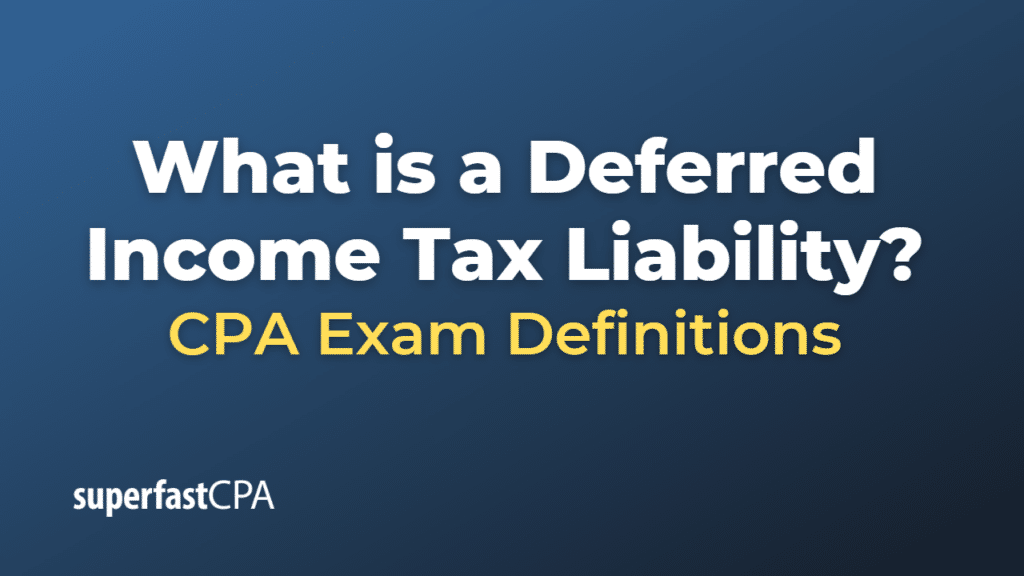Deferred Income Tax Liability
A deferred income tax liability is a tax that a business owes but has not yet paid to the tax authorities. This situation can arise due to the difference in timing between when a business recognizes income and expenses for tax purposes compared to when it recognizes them for financial reporting purposes.
In many countries, tax laws allow businesses to use different accounting methods for financial reporting (accrual basis) and tax reporting (often a cash basis or a different form of accrual accounting). As a result, a company might recognize income or expenses in different periods for tax purposes compared to its financial statements.
If a company recognizes income for financial reporting purposes before it is recognized for tax purposes, it will have a deferred tax liability. This is because the company will pay tax on that income in a future period.
Similarly, if a company recognizes an expense for tax purposes before it is recognized for financial reporting purposes, it will also have a deferred tax liability. This is because the company received a tax benefit from the expense in the current period, reducing its current tax expense, but it will not receive this benefit in the future when the expense is recognized for financial reporting purposes.
Deferred tax liabilities are recorded on the balance sheet. The company should eventually settle these liabilities when the timing difference reverses, i.e., when the income is recognized for tax purposes or the expense is recognized for financial reporting purposes.
Example of a Deferred Income Tax Liability
Let’s consider an example of a deferred tax liability caused by depreciation differences.
Assume a company buys a machine for $100,000, which is expected to have a useful life of 10 years with no salvage value. For financial reporting purposes, the company uses straight-line depreciation, which results in a depreciation expense of $10,000 each year ($100,000 / 10 years).
However, for tax purposes, the company uses an accelerated depreciation method allowed by the tax code, which results in a depreciation expense of $20,000 in the first year.
In the first year, the company’s financial statements will show a depreciation expense of $10,000, but for tax purposes, the depreciation expense is $20,000. This means the company will report higher income on its financial statements than on its tax return.
The difference between the tax expense and the income tax expense reported in the financial statements represents a deferred tax liability. This is because the company will owe more in taxes in the future when the depreciation for tax purposes is less than the depreciation for financial reporting purposes.
In this case, assuming a tax rate of 25%, the deferred tax liability at the end of the first year would be $2,500. This is calculated as the difference in depreciation ($20,000 – $10,000) multiplied by the tax rate (25%).
The company would record this as follows:
- Debit Income Tax Expense $2,500
- Credit Deferred Tax Liability $2,500
Over the life of the asset, the total depreciation and total tax expense will be the same for both financial reporting and tax purposes. However, the timing of when the depreciation and tax expense are recognized will differ, leading to the creation and then reversal of the deferred tax liability.













